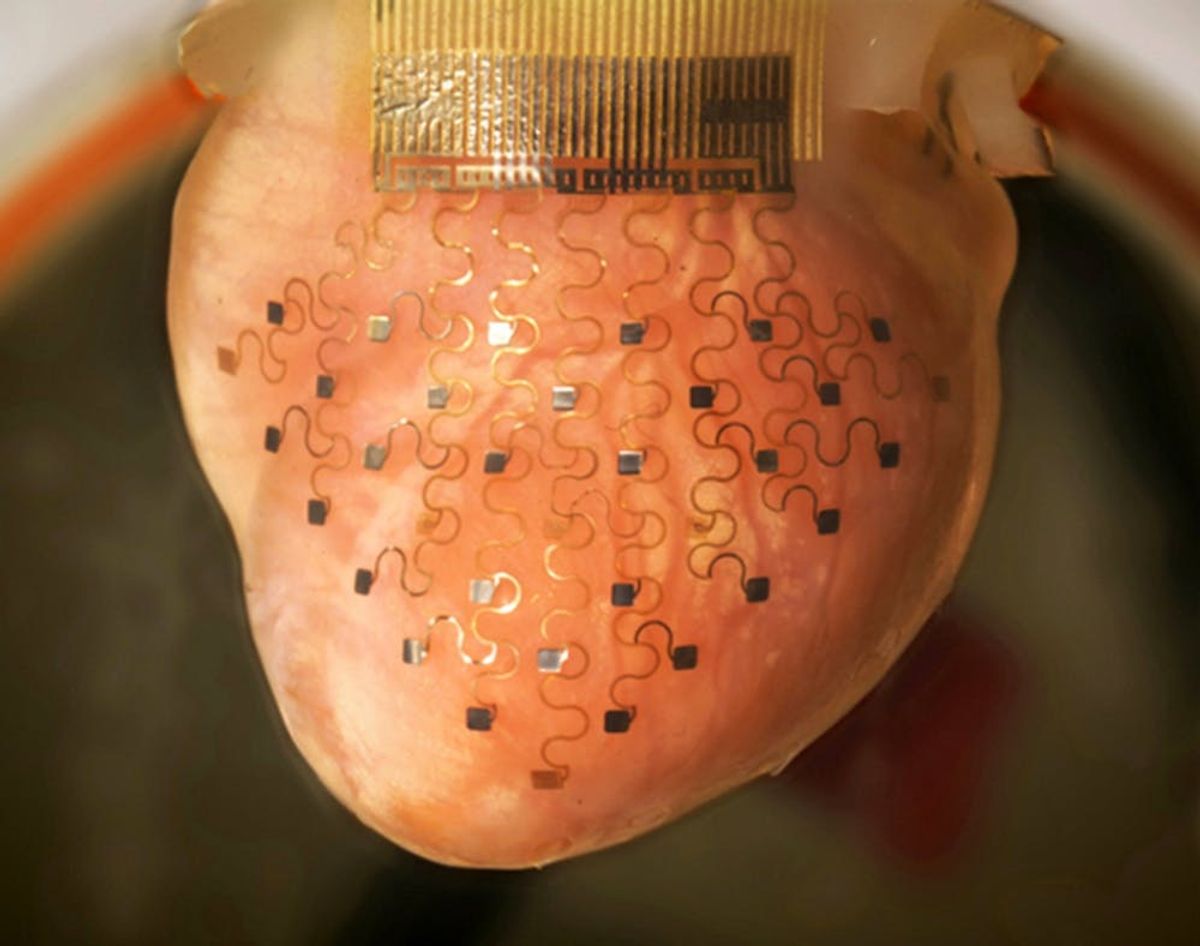Here’s How You Can Stop Heart Attacks With a Smartphone

Soap operas down the road better find a new medical cliche, because the days of Dr. McDreamy commanding a resident to bust out the paddles on someone’s chest to bring them back from the light are just about over. There will someday be an app that can help get the job done. Much less dramatically.
The app doesn’t work alone, it will be connected to a WiFi-enabled, “smart” defibrillator, the latest omg medical invention hailing from professors at Washington University. The lightweight cardiac implant is a 3D printed, custom-fit (thanks to 3D MRI and CT machine scans of a patient’s heart) gold metallic mesh sleeve that wraps around the heart. It uses over 30 electrodes and a series of algorithms to detect arrhythmias and cardiac problems. If it detects a problem, it can deliver corrective electric shocks. Watch it in action here:
The sensors will share heart info with smartphones to give patients and their doctors a real-time data feed straight from the heart to their shared app. The implant will stay juiced with a rechargeable battery, induction power or (the hope) technology that could capture energy internally from heartbeats or through chemical reactions.
Let’s talk about the potential health benefits: As you probably know from older relatives who have had them, pacemakers and implantable defibrillators have been around for decades — but today’s top devices analyze data from two or three electrodes compared to this future model’s 30. This would mean more exact results and limiting false positives to save the patient from unnecessary shocks.Since the device uses measurements from 3D scanning and is created with 3D printing, it could also be created custom to fit and aid a wider range of people, including younger patients who have heart problems.
As fancy, app-connected wearables tend to do, it would keep track of other vitals like pH levels in the blood, body temperature and metabolism. Helpful for overall health, but more specifically for alerting one to the onset of a heart attack. We probably won’t see a device quite like this for the next 10 to 15 years, but when it arrives it will help revolutionize cardiac care and likely join an army of devices that connect you and your doc digitally to all of your inner workings.
(h/t: Wired)

















